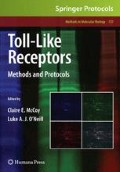Summary
Pathogen recognition is a central activity of the Toll-like receptor (TLR) family. Molecules from various pathogens have been widely used in TLR research as natural ligands for the receptors. TLR ligands from bacteria, viruses, and fungi are widely available from commercial companies and are increasingly being manufactured with high purity specifically for use in TLR research. Although increasingly used in TLR research, extracts from many parasites with potential TLR ligands are not generally produced commercially. Historically, parasite extracts were produced in academic laboratories for diagnostic or vaccination research, often without an emphasis on quality control. Here we describe methods for isolation of eggs from the human parasite Schistosoma mansoni. We also describe a protocol for generation of S. mansoni soluble egg antigens (SEA), which are commonly used in TLR research. This protocol has application for the isolation of extract from other parasites or pathogens as it is intended to reduce contamination that may cause spurious data in TLR research.
Access this chapter
Tax calculation will be finalised at checkout
Purchases are for personal use only
References
Yarovinsky, F., D. Zhang, J. F. Andersen, G. L.Bannenberg, C. N. Serhan, M. S. Hayden, S. Hieny, F. S. Sutterwala, R. A. Flavell, S. Ghosh, and A. Sher (2005) TLR11 activation of dendritic cells by a protozoan profilin-like protein. Science 308, 1626–1629.
Coban, C., K. J. Ishii, T. Kawai, H. Hemmi, S. Sato, S. Uematsu, M. Yamamoto, O. Takeuchi, S. Itagaki, N. Kumar, T. Horii, and S. Akira (2005) Toll-like receptor 9 mediates innate immune activation by the malaria pigment hemozoin. J. Exp. Med. 201, 19–25.
Parroche, P., F. N. Lauw, N. Goutagny, E. Latz, B. G. Monks, A. Visintin, K. A. Halmen, M. Lamphier, M. Olivier, D. C. Bartholomeu, R. T. Gazzinelli, and D. T. Golenbock (2007) Malaria hemozoin is immunologically inert but radically enhances innate responses by presenting malaria DNA to Toll-like receptor 9. Proc. Natl. Acad. Sci. U. S. A. 104, 1919–1924.
Pearce, E. J., C. M. Kane, and J. Sun (2006) Regulation of dendritic cell function by pathogen-derived molecules plays a key role in dictating the outcome of the adaptive immune response. Chem. Immunol. Allergy 90, 82–90.
Fallon, P. G. (2000) Immunopathology of schistosomiasis: a cautionary tale of mice and men. Immunol. Today 21, 29–35.
Hirschfeld, M., Y. Ma, J. H. Weis, S. N. Vogel, and J. J. Weis (2000) Cutting edge: repurification of lipopolysaccharide eliminates signaling through both human and murine toll-like receptor 2. J. Immunol. 165, 618–622.
Lewis, F. (1998) Schistosomiasis. Curr. Prot. Immunol. 28, 19.11.11–18.
Mangan, N. E., N. van Rooijen, A. N. McKenzie, and P. G. Fallon. (2006) Helminth-modified pulmonary immune response protects mice from allergen-induced airway hyperresponsiveness. J. Immunol. 176, 138–147.
Valentinis, B., A. Bianchi, D. Zhou, A. Cipponi, F. Catalanotti, V. Russo, and C. Traversari. (2005) Direct effects of polymyxin B on human dendritic cells maturation. The role of IkappaB-alpha/NF-kappaB and ERK1/2 pathways and adhesion. J. Biol. Chem. 280, 14264–14271.
Salio, M., V. Cerundolo, and A. Lanzavecchia. (2000) Dendritic cell maturation is induced by mycoplasma infection but not by necrotic cells. Eur. J. Immunol. 30, 705–708.
Acknowledgments
Many of the methods described here were adapted from techniques developed in Mike Doenhoff’s or David Dunne’s groups. Padraic Fallon thanks both for their support and mentorship over the years. Authors are supported by Science Foundation Ireland.
Author information
Authors and Affiliations
Corresponding author
Editor information
Editors and Affiliations
Rights and permissions
Copyright information
© 2009 Humana Press, a part of Springer Science + Business Media, LLC
About this protocol
Cite this protocol
Smith, P., Mangan, N.E., Fallon, P.G. (2009). Generation of Parasite Antigens for Use in Toll-Like Receptor Research. In: McCoy, C.E., O’Neill, L.A.J. (eds) Toll-Like Receptors. Methods in Molecular Biology™, vol 517. Humana Press, Totowa, NJ. https://doi.org/10.1007/978-1-59745-541-1_24
Download citation
DOI: https://doi.org/10.1007/978-1-59745-541-1_24
Publisher Name: Humana Press, Totowa, NJ
Print ISBN: 978-1-934115-72-5
Online ISBN: 978-1-59745-541-1
eBook Packages: Springer Protocols

